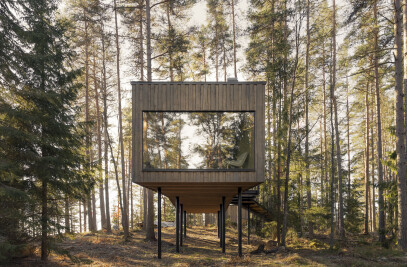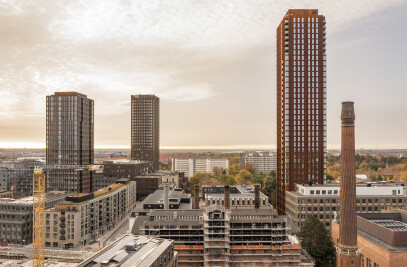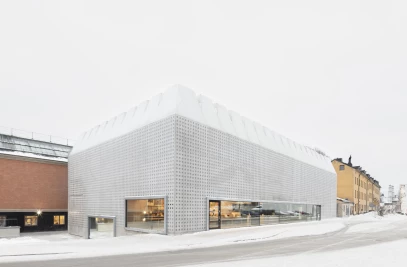In Vietasjåkk, the climate is a mighty force. The snow comes early and leaves late. The arctic wind drives it into drifts that make the winter terrain completely different from the summer. The landscape is recreated anew each year. Even in summer, nature remembers the winter. And this building remembers the snowstorm—even on the days when the ground is carpeted in the pale purple flowers of the moss campion.
The forces of nature that sculpted the Stuor Muorkke, or Great Lake Falls region, have brought forth a simple, rounded form. The snow’s ability to fill every pocket in the lee of the wind is exploited here to create a building with a memory. In winter, the central courtyard quickly fills to the brim with snow. This snow trap becomes the primary attraction of the interior in early spring; the glass walls reveal a cross-section of sedimentary layers of snowfall. Behind the cold glass of the untempered entrance hall, visitors can track the changes in the snowpack as though in a laboratory. The building’s outer shell consists of massive blocks of wood stacked in a ring, and broad gaps between the blocks catch drifting snow, inviting it to become part of the façade. The seemingly simple building form thus becomes a snow sculpture enlivened by the passing seasons, and those seasons become essential to the building’s raison d’être.
The extreme conditions that have shaped Snöfällan are the same that once shaped the building traditions of the Laplanders. Not that the two are similar—but they indeed spring from the same foundations.


































